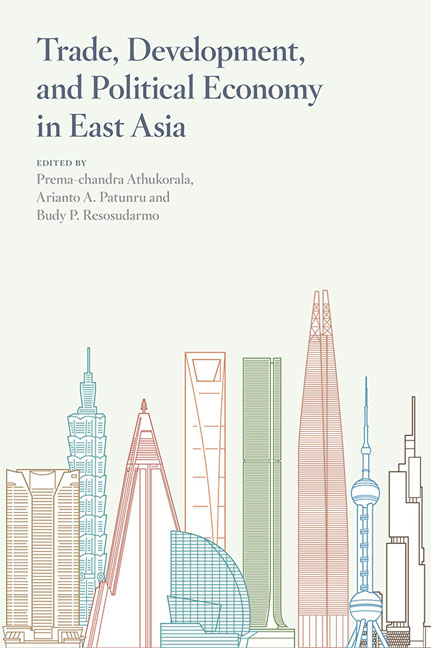Book contents
- Frontmatter
- Contents
- Tables
- Figures
- Contributors
- Foreword
- Acknowledgments
- Glossary
- 1 Introduction
- PART 1 TRADE
- PART 2 DEVELOPMENT
- 5 Economic relations between China, India and Southeast Asia: coping with threats and opportunities
- 6 Revisiting the growth acceleration episodes of Indonesia and India: a political economy reading
- 7 Exporting, education, and wage differentials between foreign multinationals and local plants in Indonesian and Malaysian manufacturing
- 8 Indonesia: returns to occupation, education, and ability during a resource export boom
- 9 Labour market regulation and employment during the Yudhoyono years in Indonesia
- 10 Vietnam: trapped on the trail of the tigers?
- PART 3 POLITICAL ECONOMY
- References
- Index
7 - Exporting, education, and wage differentials between foreign multinationals and local plants in Indonesian and Malaysian manufacturing
from PART 2 - DEVELOPMENT
Published online by Cambridge University Press: 19 May 2017
- Frontmatter
- Contents
- Tables
- Figures
- Contributors
- Foreword
- Acknowledgments
- Glossary
- 1 Introduction
- PART 1 TRADE
- PART 2 DEVELOPMENT
- 5 Economic relations between China, India and Southeast Asia: coping with threats and opportunities
- 6 Revisiting the growth acceleration episodes of Indonesia and India: a political economy reading
- 7 Exporting, education, and wage differentials between foreign multinationals and local plants in Indonesian and Malaysian manufacturing
- 8 Indonesia: returns to occupation, education, and ability during a resource export boom
- 9 Labour market regulation and employment during the Yudhoyono years in Indonesia
- 10 Vietnam: trapped on the trail of the tigers?
- PART 3 POLITICAL ECONOMY
- References
- Index
Summary
INTRODUCTION
Until recently, Lipsey and Sjöholm's (2004a) study of manufacturing plants in Indonesia in 1996 was one of the few studies of wage differentials between foreign multinational enterprises (MNEs) and local plants, which accounted for the fact that MNEs tend to hire relatively larger shares of workers with higher education. They found that MNEs paid significantly higher wages than local, private plants even after accounting for the educational background of the plant's workforce and other plant-level characteristics, and that these conditional wage differentials were larger for white-collar workers than for blue-collar workers. Recently, Ramstetter and Narjoko (2013) re-examined the 1996 evidence and added evidence for 2006, obtaining qualitatively similar results for both years when all manufacturing plants are combined in one sample, though industry-level evidence was weaker. In addition, similar evidence for Malaysian plants in 2000–2004 (Ramstetter 2013) also suggests the existence of positive, MNE–local wage differentials after accounting for both worker education and occupation, in addition to other plant characteristics, both when all industries are combined and at the industry level.
However, none of these studies account for the potentially important effect of a plant's export status on MNE–local wage differentials. As Athukorala and Devadason (2012, 1503) explain in their study of foreign labour's effect on Malaysian wages: ‘export-oriented firms generally operate under greater demand pressure compared to domestic-market oriented firms which enjoy both policy-induced and natural protection’. Similarly, factor endowments-based theories of international trade imply that exporters are more likely to experience a tendency toward factor price equalisation than non-exporters. In the case of relatively labour-abundant economies like Indonesia and Malaysia, this would suggest that ratios of wages to capital costs should be higher in exporters than in non-exporters. Another body of literature emphasises the importance of high entry costs into export networks, and there is evidence firms able to bear the costs of export entry are likely to increase their demand for skilled labour and pay relatively high wages as a result (Bernard and Jensen 1997). However, none of these studies address the question of whether differences between exporters and non-exporters have differential effects on MNEs and local plants, and thus MNE–local wage differentials. The purpose of this study is thus to investigate whether MNE–local wage differentials differ between exporting plants and non-exporters.
- Type
- Chapter
- Information
- Trade, Development, and Political Economy in East AsiaEssays in Honour of Hal Hill, pp. 112 - 133Publisher: ISEAS–Yusof Ishak InstitutePrint publication year: 2014

